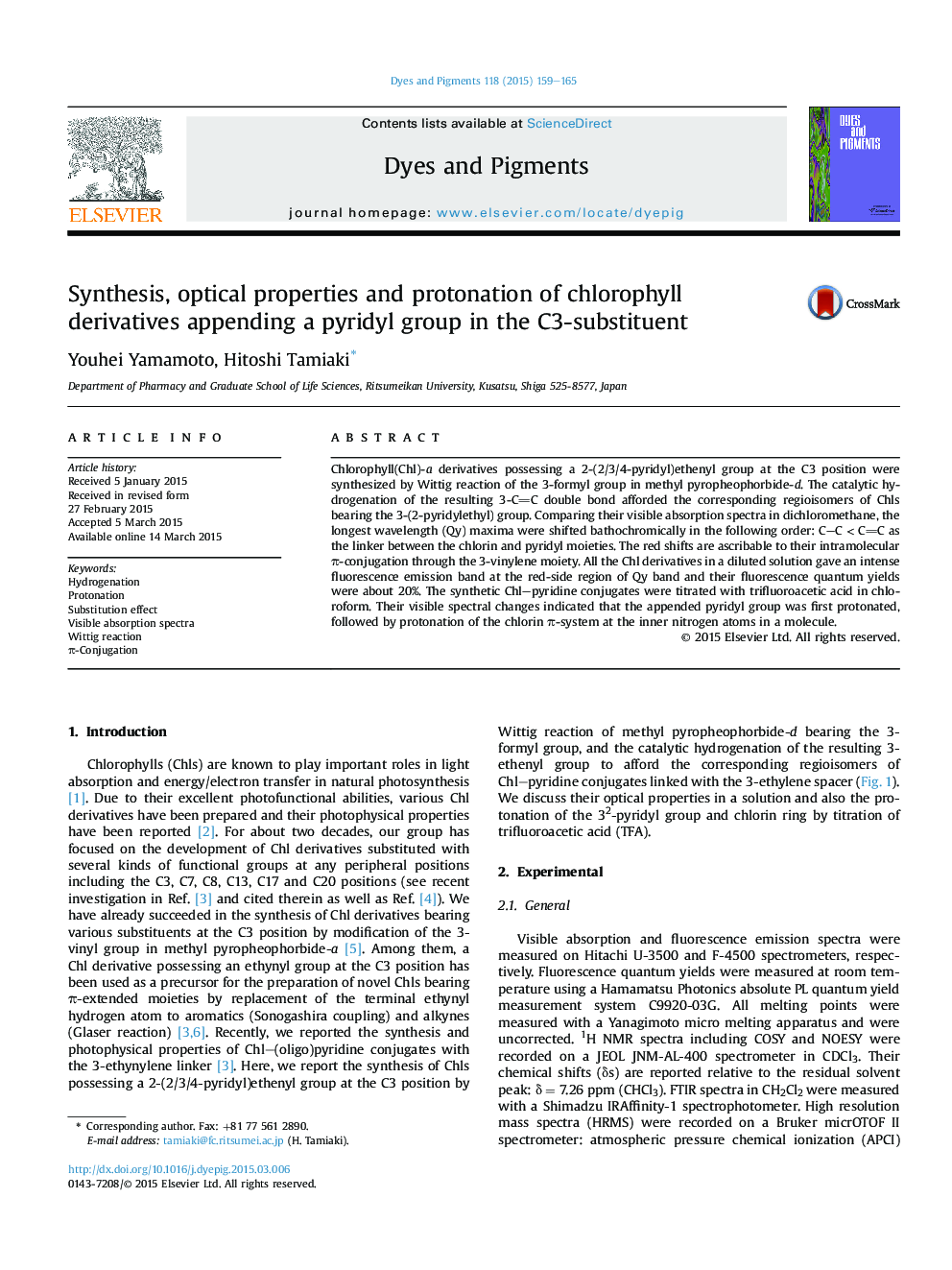| Article ID | Journal | Published Year | Pages | File Type |
|---|---|---|---|---|
| 175892 | Dyes and Pigments | 2015 | 7 Pages |
•Chlorophyll–pyridine conjugates with the 3-vinylene linker were synthesized.•Substitution effect of synthetic regioisomers on optical properties was discussed.•The peripheral pyridyl moiety was first protonated, then the chlorin ring was done.
Chlorophyll(Chl)-a derivatives possessing a 2-(2/3/4-pyridyl)ethenyl group at the C3 position were synthesized by Wittig reaction of the 3-formyl group in methyl pyropheophorbide-d. The catalytic hydrogenation of the resulting 3-CC double bond afforded the corresponding regioisomers of Chls bearing the 3-(2-pyridylethyl) group. Comparing their visible absorption spectra in dichloromethane, the longest wavelength (Qy) maxima were shifted bathochromically in the following order: C–C < CC as the linker between the chlorin and pyridyl moieties. The red shifts are ascribable to their intramolecular π-conjugation through the 3-vinylene moiety. All the Chl derivatives in a diluted solution gave an intense fluorescence emission band at the red-side region of Qy band and their fluorescence quantum yields were about 20%. The synthetic Chl–pyridine conjugates were titrated with trifluoroacetic acid in chloroform. Their visible spectral changes indicated that the appended pyridyl group was first protonated, followed by protonation of the chlorin π-system at the inner nitrogen atoms in a molecule.
Graphical abstractFigure optionsDownload full-size imageDownload as PowerPoint slide
